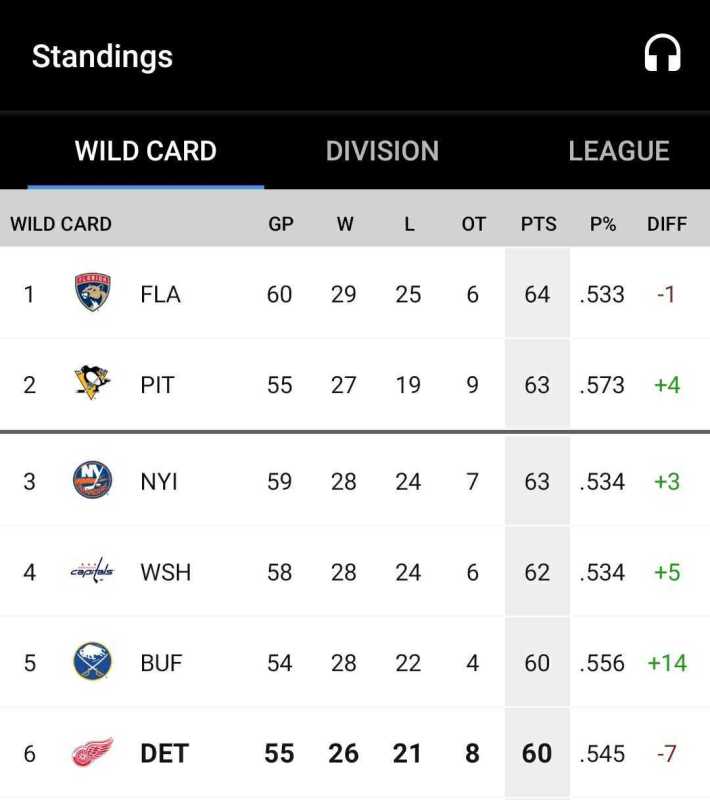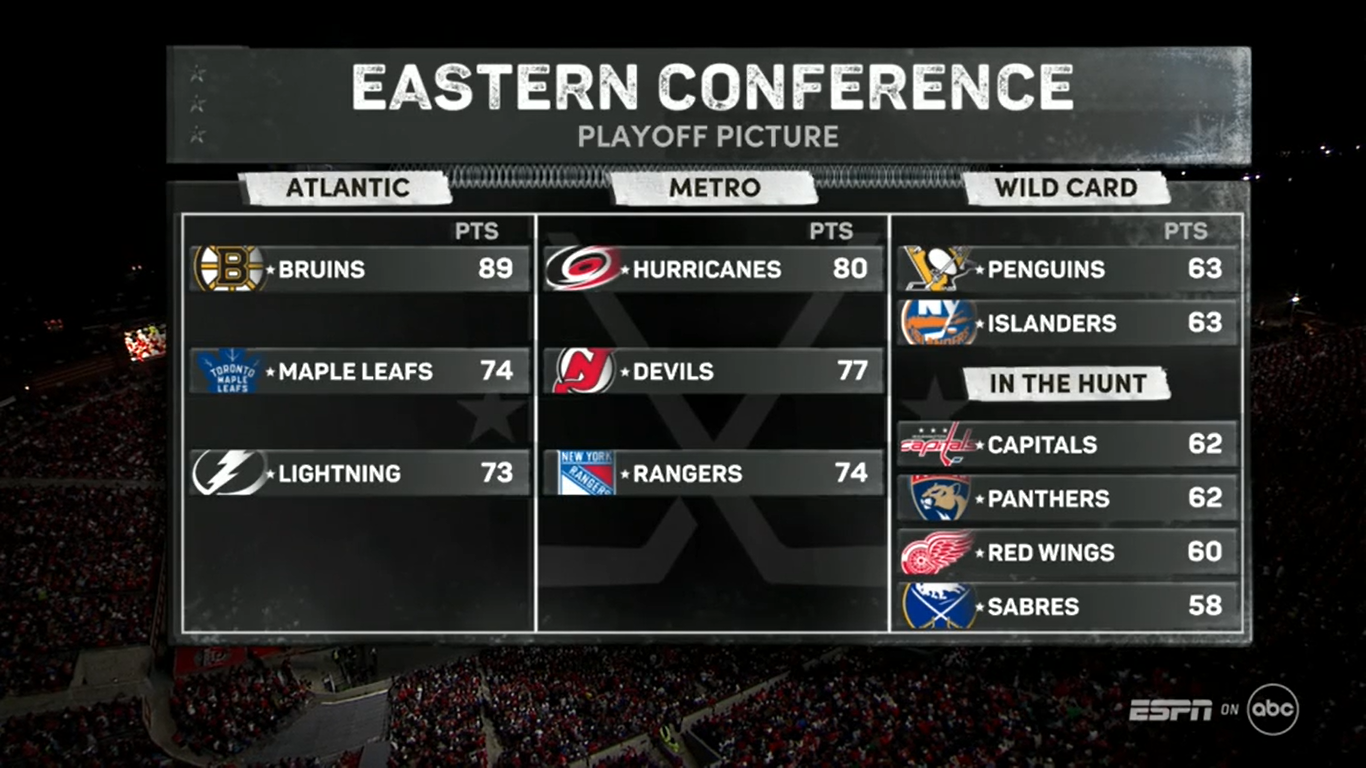On their broadcast of Saturday night's big Caps-Hurricanes game at the NC State football stadium, ESPN put up the above graphic in an attempt to outline the playoff chase in the Eastern Conference. This is a fraudulent graphic. I will explain why in a moment.
On Monday night, I was making dinner and listening to the radio broadcast of Islanders-Penguins—which was an awesome game, by the way—when I heard an announcer claim that, with their win earlier that day, the Florida Panthers had jumped both teams and picked up a playoff spot. Here's what the standings looked like at the time. See if you can spot the problem.

The Panthers have played too many damn games, is the problem. Yes, technically, they have accumulated more points than any of the teams sitting outside the official playoff bubble (the Islanders have since ascended to seventh in the East with their win), but Florida's actual record of 29-25-6 is worse than anyone else in that image. And while Buffalo, at the quickest of glances, looks to be in trouble, their own mark of 28-22-4 actually allows them to control their own playoff destiny.
I don't want to flatter myself, but maybe a few regular readers of this blog have noticed that I am loath to use points as a signifier of an NHL team's status at any point in-season. Instead, I like to give either full win-loss tallies or say that they have, in the current case of the Isles, "the 10th-best record in the East." Points are useful after the season is over, when every team is on equal footing. (We will not be debating the existence of the loser point here.) But in February, as teams fight for position, points are foolish and easily manipulated by the tricks of the schedule.
The humble points percentage, on the other hand, is noble and trustworthy, expertly taking in the gains of each team while also, without distraction, evaluating them against total opportunities. It is without question the most complete measure of a team's success when there are an uneven number of games left to be played. So why isn't it the standard? Why do many standings pages not even include points percentage? Why do broadcasters and announcers keep turning to points to tell an incomplete story?
A generous answer—bird in the hand, etc.—is that points judge a team based on what they've actually earned. You can only win the games you play, and all that. The less generous answer is that nobody wants to read the fine print, and they're fine just going "Wow, 63 points!" The NHL encourages this simplicity by defaulting to points to sort its standings, but that doesn't make it right. So until the end of the season, here is a very easy rule for hockey folks to follow: If you need other teams to lose in order to make the playoffs, then you are not in a playoff spot.





